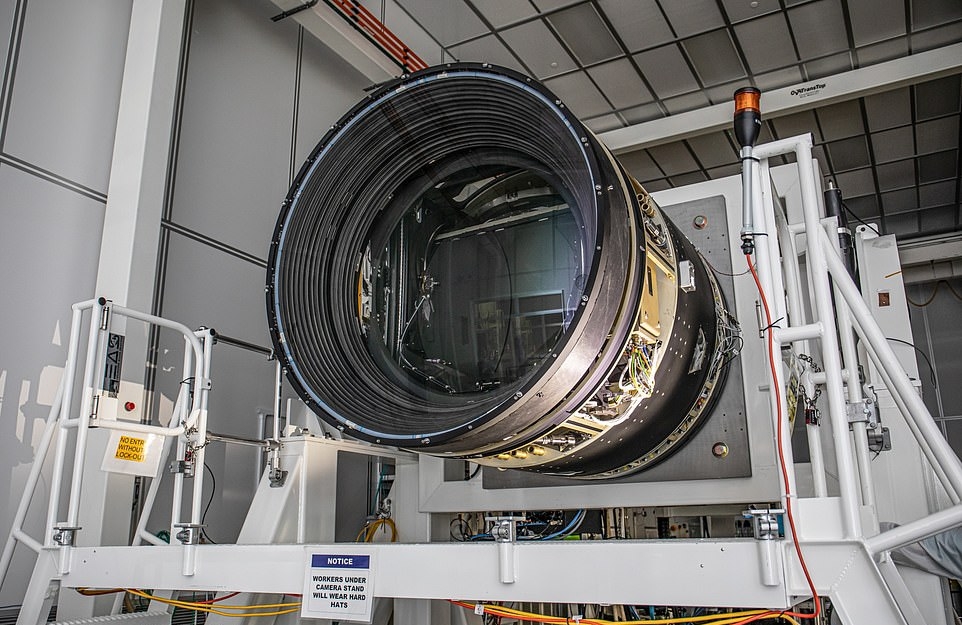
The Vera Rubin Observatory, being built on a remote mountaintop in Chile, will conduct a ten-year survey that will image the entire Southern Hemisphere sky every few days.
For this ambitious task, it also needs its corresponding camera, the largest digital camera ever made, which will provide a resolution of up to 3,200 megapixels.
Construction of the three-ton machine has just been completed at SLAC National Laboratory in California Space.com website.
The 211 CCD sensors can be seen behind the large lens (SLAC)
“It will provide images with such detail that they could make out a golf ball from 15 miles away, while covering an area of the sky seven times the size of a full moon,” said Aaron Rodman, head of camera development at SLAC. .
Rodaman said that the camera will be placed behind an 8-meter optical telescope and “will allow us to see billions of galaxies and about 17 billion stars in our Milky Way Galaxy.”
The telescope's primary mirror is 8 meters in diameter (Rubin Observatory)
The Vera Rubin Observatory will monitor changes in the skies of the Southern Hemisphere in an attempt to solve the mystery of dark energy, the unknown factor responsible for the accelerating expansion of the universe.
It will also collect evidence of the equally mysterious dark matter, a hypothetical substance that accounts for 85% of the matter in the universe but cannot be directly observed because it does not absorb or emit light or interact with ordinary matter.
The new observatory was named in honor of American astronomer Vera Rubin (1928-2016), who in the 1930s discovered the first indications of the existence of dark matter. Specifically, he found that the speed of rotation of galaxies can only be explained by the existence of an invisible form of matter.
The Vera Rubin Observatory is being built at an altitude of 2713 meters (Rubin Observatory)
The giant camera is ready, but it needs to be transported from California to the top of Mount Thiro Pachon where the observatory is being built, at an altitude of 2,713 metres.
It will be a difficult task, since the camera's 201 sensitive CCD sensors are only 5 micrometers thick and only half a millimeter apart.
To avoid any accidents, SLAC National Laboratory has already conducted a transport experiment with a dummy payload of the same size and weight as the camera, on which accelerometers were placed to measure pressures.
The camera is expected to be installed in its final location this summer, while the Vera Rubin Observatory is scheduled to become fully operational in August 2025.

“Total alcohol fanatic. Coffee junkie. Amateur twitter evangelist. Wannabe zombie enthusiast.”





More Stories
It even predicts an asteroid impact on Earth
Rumor: We learned how much TeraFLOPS power the Nintendo Switch 2 will have!
When will humans disappear from Earth? The world's first supercomputer simulation provides the answer